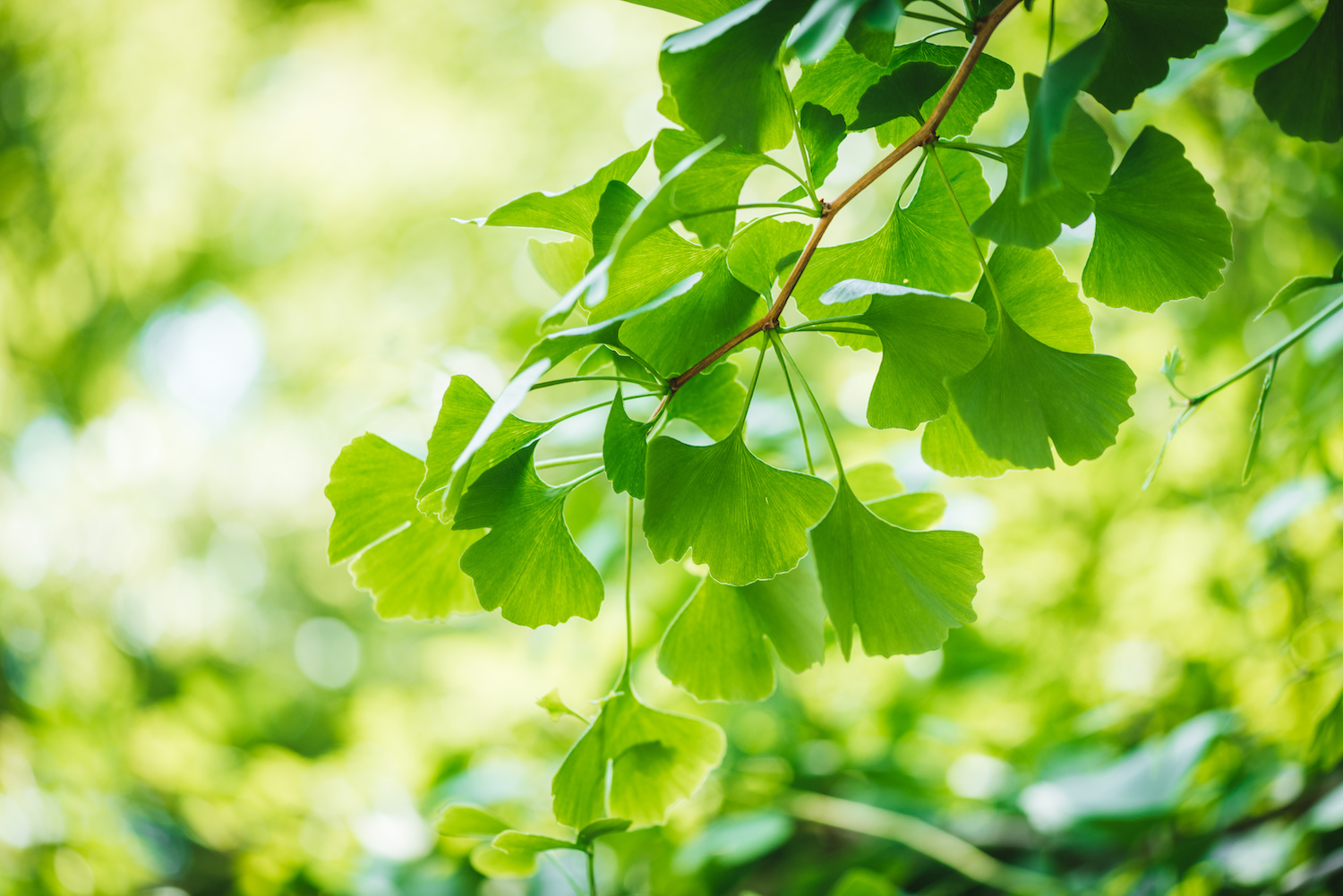
Ginkgo is a fascinating tree. Not only is it an attractive ornamental tree, but it also has the distinction of being considered a living fossil, as preserved leaves and bark have been discovered dating back around 200 million years. Here in the U.S., it is possible to see some of these fossils in Ginkgo Petrified Forest State Park in Vantage WA. Environmental changes meant that ginkgo became extinct in North America seven million years ago, and in Europe two and half million years ago, however it survived in a form very little changed from those ancient days in China.
Never abundant, it was considered sacred by the Buddhist monks, who cultivated it and in turn took it to Japan, where it was ultimately to come to the attention of westerners. It was discovered there in 1691 by Engelbert Kaempfer, a German scientist, and by the late 1700s it was introduced into North America, where it earned its common name of maidenhair tree due to its foliage that resembles maidenhair fern.
Ginkgo biloba is a unique tree being the only species within the botanical division of Ginkgophyta, and as such is one of four categories of living gymnosperms (plants whose unfertilized seeds are exposed) which include conifers, cycads (eg. sago palm) and gnetophytes (a small group of predominantly tropical vines).
Aside from its remarkable history, it has many qualities that make it a desirable ornamental tree. These include:
Hardiness
Suited to USDA Zones 3-8, ginkgo grows best in full sun to part shade, and makes an excellent street tree, being tolerant of heat, compacted soil, salt, air pollution, and drought once established.
Characteristics
A deciduous tree, with interesting furrowed bark on mature specimens, the species reaches 50-80 feet tall, 30-40 feet wide and is pyramidal in shape. It is easy to establish and is long-lived: the oldest recorded example was calculated to be 3500 years old.
Foliage
Ginkgo has distinctive, leathery green leaves, which are divided into two parts, hence “biloba”, two lobes. While some cultivars have leaves that look more like fans, others have leaves where the two lobes are quite obvious, giving the foliage more of a heart-shaped appearance. In fall the leaves turn a brilliant, golden yellow, and shortly thereafter they will fall all at once, creating a colorful carpet around the base of the tree.
Seeds
Ginkgo has separate male and female plants. Male trees produce green catkins in April and female trees develop seeds that look like small apricots, having a fleshy outer coating surrounding a hard nut. In the nursery trade, only male trees are generally sold due to the fact that the seeds are messy and slippery underfoot, and also have a repulsive odor.
Ginkgo is resistant to pests and diseases and is not attractive to deer. While the leaves are used medicinally in the west, and the seeds similarly in Asia, the leaves and seeds’ fleshy outer coating are toxic. The seeds are edible, but should not be consumed in large quantities. It should also be noted that the flesh of the seeds can be a skin irritant.
However, as many cultivars sold are male, most of these issues are unimportant. If this living fossil piques your interest, here are some male cultivars to consider.
Autumn Gold – a landscape-sized version of the species, with good fall foliage, reaching 40-50’ tall.
Princeton Sentry – a narrow, columnar variety, which also reaches 40-50’ tall.
Mariken – a slow growing cultivar, ultimately reaching 3’ tall and up to 8’ wide. It has a slightly pendulous habit and lends itself particularly well to bonsai.
Saratoga – with dense, symmetrical branches, this slow-growing cultivar ultimately reaches 24’ tall and 10’ wide. Its leaves are narrower than the species and pendulous.
Jade Butterfly – a dwarf variety, slowly reaching 12’ tall and 10’ wide, it has dense branches and leaves that are held stiffly rather than the regular drooping effect of the species. It received its name due to the leaves’ resemblance to butterfly wings.
Menhir – reaching just 16’ tall, it has a narrow, columnar shape and small, ruffled leaves.
Baldii – is another compact variety, reaching 9’ tall and wide. Foliage emerges blue-gray.
Chi Chi – is a compact, shrub-form cultivar, reaching just 5’ tall and wide.
Sources:
Arbor Day Foundation – https://www.arborday.org/trees/treeguide/TreeDetail.cfm?ItemID=1092
Royal Botanic Gardens Kew – https://www.kew.org/read-and-watch/ginkgo-biloba-maidenhair-tree-kew-gardens
Oregon Department of Forestry – https://www.oregon.gov/ODF/Documents/ForestBenefits/Gingko.pdf









